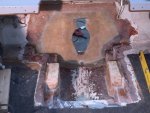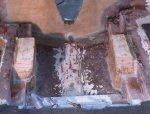- Joined
- Mar 8, 2009
- Messages
- 43,587
Have my jigsaw puzzle replacement piece PB'd together and curing
Did you use CSM between the two layers of plywood right for ester resin, or biax between for epoxy?
Last edited:















Have my jigsaw puzzle replacement piece PB'd together and curing
Did you use CSM between the two layers of plywood right for ester resin, or biax between for epoxy?
If the foam-in-a-can is closed cell, I'd go ahead and use it below decks. if it's open cell - and I thought I read somewhere that most of it is open cell - I'd be hesitant to put it anywhere it might be exposed to water. Why do all this work and then put something absorbent below deck? If any moisture did find it's way down there, open cell foam would make sure it didn't leave. Doesn't make much sense to me.
Sounds like you're building it strong! Maybe you should pop a V8 in there to take advantage of that strong transom! :behindsofa:
Again, the original transom prolly was built with Polyester resin and thus the use of CSM. Since you're using Epoxy there is really no reason for the CSM. It adds little benefit to the lamination since it has very little structural strength due to it's loose fiber construction. It's manufactured mainly as a binder for Polyester resin so the Styrene in the resin can break down the fibers and use them to keep the resin from breaking apart once fully cured.
Looks real good, You probably know, but just in case, final thickness should be between 2 and 2 1/4 inch

